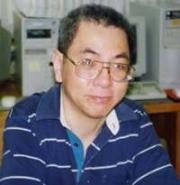
Contact Information
Email: nguyen@uwaterloo.ca
Phone: 519-888-4567 x42794
Location: HH 202
Professor | Economics, Faculty of Arts
When Mr. Nguyen was a third-year undergraduate in chemical engineering at Berkeley, he had to take two half courses of introductory economics as a breadth degree requirement. It was an eye-opening experience as he found that economics was not very much different from engineering in terms of the required discipline and problem-solving skills. Mr. Nguyen got hooked in economics and started taking extra economics credits along with his engineering courses. Went on to do well in engineering but after graduation, went to Simon Fraser for a qualifying term before getting into the MA Economics program. He learned that modern economics requires analytical skills as much as mathematics, and again started taking extra math credits along the MA program. After graduation, Mr. Nguyen went to Western for graduate study in mathematics for two years before switching back to economics for good (enough running around).
Mr. Nguyen is interested in applying methods of economic analysis to issues of public policy interest. Topics that he worked along this line include computational models of resource allocation, price controls, rationing, black markets, global trade liberalization, taxation, owner-occupied housing, regional skill mobility, illegal immigration, and border delays. He am also interested in issues of development, Asian economies, and lately, the new field of scholarship of teaching and learning (SoTL).
Selected Publications:
- Nguyen, T. T. and R. M. Wigle. (2011). “Border delays re-emerging priority: within-country dimensions for Canada.” Canadian Public Policy, 37(1), March, 49-59.
- Nguyen, T. T. and A. Trimarchi (2010) “Active learning in introductory economics: do MyEconLab and Aplia make any difference?” International Journal for the Scholarship of Teaching and Learning, 4(1), January.
- Nguyen, T. T. (2009) “Environmental consequences of dioxin from the war in Vietnam: what has been done and what else could be done?” International Journal of Environmental Studies, 66(1), 9-26.